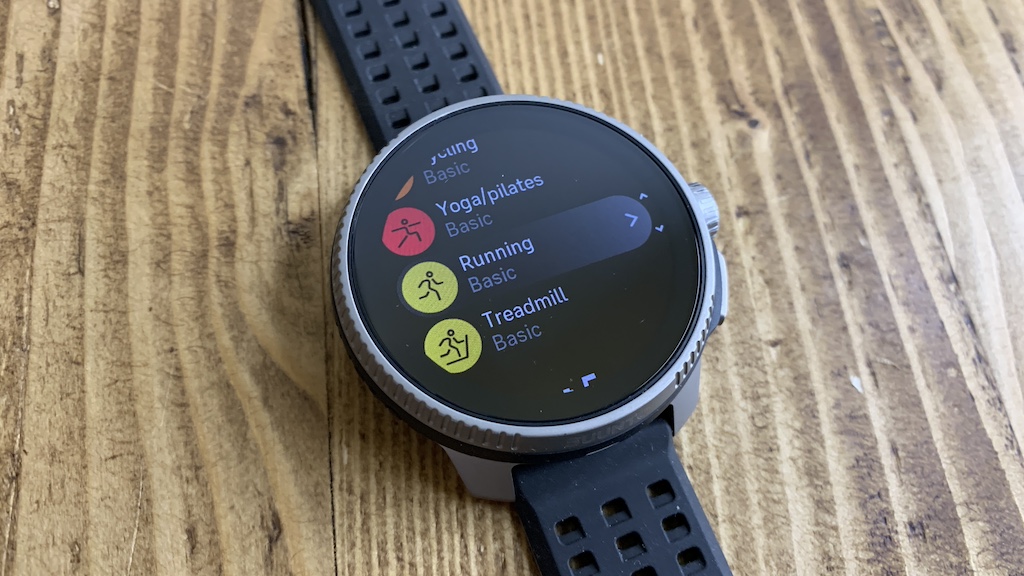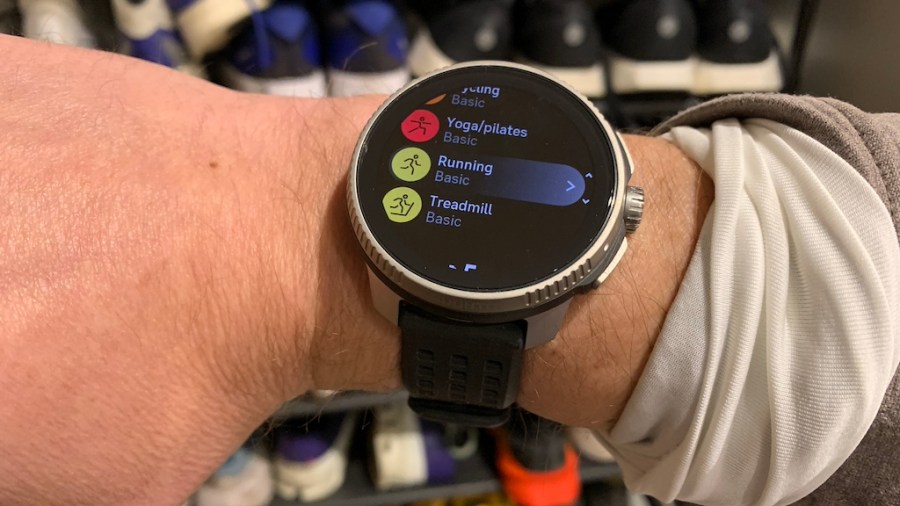I tested the Suunto Race and found it’s a big upgrade on the company’s previous running watches.
Men’s Fitness verdict
An excellent watch for the price. The AMOLED screen is crisp; the breadth of training, navigation and health features is good; battery life is competitive; and GPS accuracy is largely on point.- Excellent, bright, crisp display
- Good battery life for an AMOLED
- Software and touchscreen is laggy
- Quick release strap design is fiddly
It’s fair to say that Suunto’s recent running watches haven’t really hit the mark. But with Garmin leading the innovation race from the front and COROS closing in from behind, this brand needed to rediscover its mojo – and fast. The Suunto Race suggests it has. This is by far one of Suunto’s best fitness watches in a long time. It won’t propel Suunto to the front of the pack, but it definitely puts it back in the chase.
Why you can trust Men’s Fitness
We spend hours testing every product or service we review, so you can be sure you’re buying the best. Our team of fitness kit reviewers includes experienced product testers and fitness writers – as well as the core MF team – who know exactly what sets the best products apart from the rest. The Suunto Race was tested by experienced tech journalist and ultra-runner Kieran Alger. Find out more about how we test.

Suunto Race display
The headline here is the screen. The Suunto Race jumps right into the AMOLED screen arms race with a stunning 1.43-inch, 466 x 466 pixel touchscreen display. The screen is crisp, bright and easy to read in all conditions. It’s somewhat spoiled by a screen bezel, but there’s still ample screen real estate and when it’s whacked up full it’s notably brighter than the Polar Vantage V3, and not far off the Garmin Forerunner 965 and the new Polar Vantage V3.
Beyond the screen, the Race has a large 49mm case and there are two bezel options, one stainless steel (£389) and one titanium (£479). I tested the titanium and it’s slick, well-designed and feels robust. The Titanium Race weighs 69g, while the stainless steel is heavier at 84g, and both offer interchangeable 22mm silicone straps. I had to take a knife to mine to budge the spring pins to get the strap on in the first instance. There are much better quick-release strap designs. I’m also not a fan of the thick silicone strap or the hook fastening mechanism that makes it quite hard to find a dialled-in fit. Give me a nylon strap any day.
Suunto Race control
For controls, there’s a combination of the touchscreen plus three buttons – one doubling as a chunky digital crown. They respond well, but I found the big digital crown often caught on my skin and was too easy to knock.
Suunto’s navigation has always been the least intuitive of the major watch brands. And that’s still the case here. The software performance wasn’t the most reliable, either. I found the raise to wake sometimes sluggish, the touchscreen isn’t as snappy as the Polar Vantage V3 or the Forerunner 965, and navigating around is often frustratingly laggy.
Suunto Race features
On features, the Race has plenty of advanced training tools to compete with Garmin, Polar and co. There’s a big selection of sport profiles that make this more than a running watch. The usual training effect, recovery time recommendations and fitness benchmarking with estimated VO2 Max. Plus, a Resources tool tells you how much you have left each day for upcoming training sessions – a bit like Garmin’s Body Battery. There’s also a Heart Rate Variability-powered Training Readiness readout.
When it comes to staying power, in max accuracy Dual Frequency GPS mode, the Suunto Race battery life offers 40 hours runtime. That’s more than the Garmin Forerunner’s 31 hours – on paper at least. The Suunto also extends to 50, 70 and 120 hours in its four lower power modes, while you get 12 days of regular use with no training. In my tests, a one-hour run using the highest accuracy GPS mode burned just 3% and matched the Garmin Forerunner 965 and the Polar Vantage V3. Though it’s potentially a little off the 40 hours Suunto claims.
Suunto Race GPS
When it comes to GPS, the Suunto Race joins the multiband, dual frequency gang and you can set the accuracy to four different modes to extend the run time. In my tests, in full accuracy mode, the Suunto Race was reliable. As reliable as the Polar Vantage V3 and the Garmin Forerunner 965 for overall distance. But also when you dig into the GPS trace details, there’s not too many stray traces through buildings or into the river.
I was less convinced by the optical heart rate performance. I put it up against the Polar H10 chest strap, the Vantage V3 and Forerunner 965 optical sensor and a Frontier X2 chest strap and on short, fast intervals where optical sensors can struggle. It did. There was a big delay compared to the Vantage V3 and spikes, lags and surprising lows on the interval tests. Even on long, slow, steady runs, the Suunto responded much slower.
Suunto Race navigation
Suunto made a name as an adventure outfit and they’ve loaded the Race with navigation smarts. You can plan and upload routes onto the watch, with heat maps, altitude profiles and your own route library. Once you’re moving there’s breadcrumb navigation, with waypoints and estimated time to destination. The touchscreen makes it easier to zoom and pan on the maps and, as with the Forerunner 965, the big bright screen helps to enhance the navigation usability.
Smartwatch features are limited. There are notifications and music controls for a connected smartphone but no storage or offline Spotify/Deezer support. No contactless payments and limited screen customisation. It might have a fancy smartwatch-esque screen, but this is not a threat to the Apple Watch outside of fitness.
Suunto Race technical specs
| Display | AMOLED |
| Display resolution | 466 x 466 pixels |
| Display size | 1.43in (diameter) |
| Connectivity | Bluetooth, WiFi |
| Weight | 83g (titanium 69g) |
How we test the best fitness watches
Kieran Alger is an ultramarathon runner and professional product tester. He trained with each of these watches for a minimum of four weeks, running across a range of distances near his base in West London as well as doing regular gym sessions.







